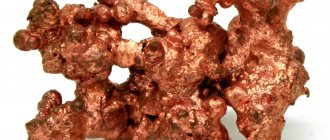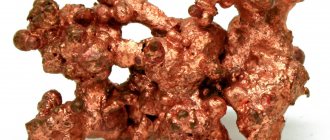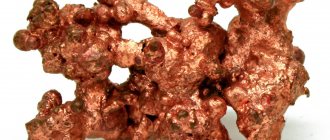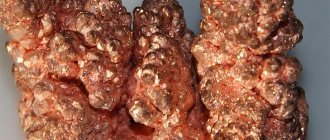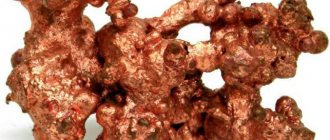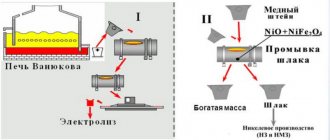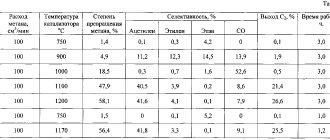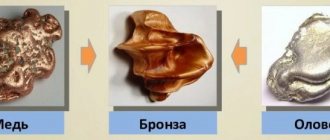Hello, dear readers. Life has never been simple. Man and his body, oddly enough, have a special connection with the structure of the earth’s crust and its composition. A lot of chemical elements play their special role in the life processes of various organisms. Plants, animals and even people were created on the basis of various elements. Mineral elements play one of the most important roles in the life of each of us. Without some, it is impossible to imagine the normal development and functioning of the body. A person grows and ages precisely thanks to such elements. One of them can safely be called copper!
Copper is a very important element for the human body. This component supports the vital functions of the body, both from the inside and outside. Copper, basically, is delivered to the body by taking it with food and through the skin, and then the element settles in the liver, kidneys, muscle tissue, brain and blood.
If the body begins to absorb less copper than it should over a period of time that is too long, an irreversible process occurs that can cause the manifestation of all sorts of diseases. In this article we will look at all the useful information about copper.
Copper benefits for the human body
It is believed that people were familiar with copper even at the beginning of the development of civilization itself. This element became one of the first with which man became friends. The first cutlery was made from copper. Copper is known to us both in pure form and as part of ores.
Inside a person, this metal accumulates in muscles and bones, as well as in the blood, kidneys, liver, and brain. One of the most important functions of copper is the synthesis of hemoglobin. In addition, it is one of the components of melanin. Many people know that it is melanin that is responsible for the pigmentation of skin and hair and that it determines how quickly a person will tan in the sun, how vitamin D will be absorbed, and this is very important in the summer.
The benefits of copper also lie in other important functions of the human body, such as:
- redox;
- anti-inflammatory;
- copper is involved in the production of collagen, which is responsible for skin elasticity;
- the copper element can protect human bones from fractures;
- copper increases immunity and normalizes the functioning of the thyroid gland;
— by consuming enough copper, you can tidy up your digestive system.
If a person’s diet is balanced and all the necessary nutrients enter his body through food intake, then a copper deficiency is almost impossible in practice. The lack of an element can be seen in:
- babies born at the wrong time;
- vegetarians;
- people who adhere to a strict diet.
An overdose of copper is almost impossible. This can only be observed in patients with metabolic disorders or when the body is poisoned with toxins that contain copper. Excess copper can occur in people with alcohol dependence. An excess of this element can have a negative effect on the body.
Sources of copper
Food
The richest dietary sources of copper include shellfish, seeds, nuts, organ meats, wheat bran cereals, whole grain products and chocolate.
Copper absorption is highly dependent on the amount of copper in the diet. Bioavailability ranges from 75% of dietary copper when the diet contains 400 mcg/day to 12% when the diet contains 7.5 mg/day of copper.
Tap water, along with other drinks, can also be a source of copper, although the amount is small and varies depending on the source, from 0.0005 μg/L to 1 mg/L.
Table. Some sources of copper.
1 cup = 240 ml.
DV – percentage of daily intake. For copper, the percentage Dv is based on the recommended daily intake of 2 mg (2000 mcg) for adults and children over 4 years of age. However, this value will change by 2021 to 0.9 mg (900 mcg).
Foods that provide 20% or more DV are considered excellent sources of nutrients.
Biologically active additives.
Copper is available in dietary supplements, either alone or in combination with other ingredients, and in many multivitamin and multimineral products.
These supplements contain many different forms of copper, including copper oxide, copper sulfate, copper amino acid chelates, and copper gluconate.
To date, no studies have compared the bioavailability of copper from these and other forms. The amount of copper in dietary supplements can range from a few micrograms to 15 mg (7.5 times the DV)
Copper is harmful to the human body
Copper is beneficial for humans if it enters the body in sufficient quantities and does not exceed the norm. As soon as the condition is violated, this metal no longer brings so much benefit as harm.
Saturation with copper is accompanied by pain in the muscles, sleep disturbances, depression, and increased irritability. Excess copper can even cause early aging. In order not to encounter such manifestations, it is very important to know your own daily copper intake. For children, 1-1.5 mg of the substance is enough, and for adults, about 3 mg.
Daily consumption rate
An adult leading a moderately active lifestyle should consume about 3 milligrams of copper per day . During pregnancy and lactation, a woman should consume a little more - 4-3 milligrams per day.
In the case of a child, everything will depend on the age and weight. For example, for children from 1 to 3 years old the norm is 1 milligram. Up to 6 years – 1.5 mg. Between the ages of 7 and 12 it is already 2 milligrams. From twelve years of age and over 2.5 mg.
An increase in the norm is justified for athletes and people who have significant physical activity, as well as for older people. In case of abuse of alcoholic beverages and cigarettes, the daily volume also increases. An increase in copper intake should also occur with decreased immunity, stress, inflammation, liver cirrhosis, etc.
The benefits of copper cookware
Many aspiring chefs dream of taking the laurels of famous chefs and revealing their secrets of preparing excellent dishes. It often happens that in pursuit of taste, many people lose attention to the container in which the food was prepared. In professional kitchens there is always a special place for copper cookware. Its benefits and harms should always be taken into account before purchasing.
One of the main features of copper cookware is its thermal conductivity. It is many times higher than that of cookware made from ordinary steel or aluminum. An aluminum pan, for example, can bring food to readiness much faster without losing its beneficial qualities. It is best to cook sauces and jams in copper.
You can consider some examples of the benefits that copper cookware brings to the human body.
— Copper is able to fight a number of bacteria and prevent them from entering the human body. Water that is poured into a copper container is completely disinfected.
— Food that is cooked in copper cookware is purified of bacteria such as salmonella at the exit. By eating purified food, you don’t have to worry about your stomach and intestines.
— Copper utensils were used several centuries ago in alternative medicine, as they were considered the purest.
Excess copper and poisoning with this chemical element
As with other components, you should be careful with copper. Its excess is fraught with a considerable list of problems for the body. The reasons for an excess of copper can be different. The most dangerous is intoxication with vapors and particles of the element when working in specialized industries or using copper utensils in everyday life.
The component will begin to be deposited in the body due to improper metabolism. It is not uncommon for copper poisoning to occur due to drinking unclean water. This can happen in rural areas or when using copper-based pesticides.
Copper bracelet: benefits and harms
The mid-eighties of the last century is known to many for a large advertising campaign promoting the healing properties of copper and copper products. Anyone who could afford to buy a copper bracelet bought it. People with less income turned all the copper objects in the house into accessories. For example, rings were made from copper wire, and copper coins were applied to sore spots.
Copper bracelets were believed and the most wonderful properties were attributed to them. Such decorations were able to lower or increase blood pressure. Those who suffered from arthritis were also saved by wearing copper jewelry, which relieved pain. When a person felt relief, it was difficult to say that copper did not help.
Belief in the healing properties of copper is becoming increasingly stronger in our time. Let's take a closer look at the benefits of a copper bracelet. The benefits of this bracelet have been confirmed by many studies.
The bracelet is a good remedy for a lack of copper in the body. It is very important not to overdo it when wearing a bracelet. You need to ensure that the metal imprint that the accessory leaves on the skin is washed off. As soon as this becomes impossible, you should take a break from wearing the bracelet.
The bracelet helps with many ailments, for example:
- during hypertensive crises;
- for pain in the back and lumbar region;
- for headaches and sleep disturbances;
- for heart diseases.
Copper itself takes part in the creation of blood and its saturation with oxygen. Metal can strengthen bones and prevent unnecessary injuries. Copper salts can destroy various bacteria and fungi. A person wearing a copper bracelet gets sick several times less than someone who does not wear one.
It is important to remember that when wearing a bracelet, it must be cleaned. Manufacturers recommend cleaning the bracelet at least once a week. You can clean it with the usual rough side of a kitchen sponge, without detergents. There is no need to resort to chemical reagents when cleaning a copper bracelet.
Indications for the use of copper for medicinal purposes. When should you take extra copper?
Doctors highlight a whole list of problems when it is really worth taking additional copper. It is believed to be effective in treating conjunctivitis when used as drops. The microelement also helps treat trachoma. For this purpose, copper-based ointment is used. Copper is often used as an antiemetic. Helps with hypochromic anemia in children. Copper can reduce musculoskeletal problems. Most often found as an antiseptic. Helps heal burns. Copper is often used to make intrauterine devices for contraception.
Rate
Copper
Lack of copper in the body
It is very important to see the first signs of copper deficiency in the body in time. Under no circumstances should they be ignored, otherwise it may lead to irreversible consequences.
— One of the first symptoms of copper deficiency in the body is hair loss.
— A person of advanced age may notice the appearance of early gray hair.
— Pale, unhealthy skin is also one of the signs of copper deficiency.
— Incidence of infectious diseases may increase.
— Frequent, causeless carrying also indicates a copper deficiency. Along with these symptoms, you will also be concerned about:
- frequent depression and irritability;
- insomnia, which will be accompanied by a gradual loss of strength;
- unexpected internal bleeding;
- severe obesity due to an increase in cholesterol in the body.
What foods contain copper?
As mentioned earlier, it is quite difficult for an ordinary person to become deficient in copper, because it is found in so many foods that, one way or another, are included in the diet of most people. Namely:
- Many vegetables are very rich in copper. For example, cabbage, as well as carrots, beets, carrots. There is a lot of it in pumpkin, radishes and potatoes. This also applies to greens: dill and lettuce.
- Some fruits also contain sufficient amounts of copper. This includes avocado and pineapple, citrus fruits and apricot.
- This list should include berries such as strawberries, gooseberries and black currants.
- The same applies to meat products: beef, pork, especially liver and kidneys.
- To compensate for copper deficiency, you should include in your diet fish, especially cod, and nuts, especially hazelnuts and sesame seeds, as well as walnuts.
- Various mushrooms and cereals are also rich in this valuable chemical element.
What does a lack of copper in the body lead to?
A lack of copper can ultimately lead to serious problems within the human body. The person feels “out of place.” He is overcome by blues and a desire to leave his usual circle of friends, to be left alone, to rest more. The patient becomes irritable and eventually turns into a hermit.
Copper deficiency kills the immune system; people suffering from copper deficiency begin to get sick often. Prolonged deficiency can cause diabetes, asthma and psoriasis. These diseases are more often observed with chronic copper deficiency.
You can improve your copper level by following a special diet that can only be recommended by a physician. Those who want to recover without special drugs in this case purchase copper bracelets.
Foods Rich in Copper
To get your daily dose of a microelement, you need to consider which foods contain copper. It is present in meat and offal, legumes, grains, nuts, seeds, etc. Vegetables are included in the list; their concentration of the nutrient is relatively low.
Beef liver
The answer to the question of which product holds the record for copper content is beef liver. If you eat just 100g, you will receive 6 times more nutrients than a person needs per day.
Lentils
Copper-rich foods include lentils. From 1 cup of beans you will get 1/4 of your daily requirement.
Buckwheat
Buckwheat is the most accessible source of copper. 100 g of raw cereal contains almost half the daily requirement of the nutrient. This is taking into account the relatively low calorie content: only 308 kcal. Additionally, cereal contains almost the entire range of other microelements. For this reason, it is highly recommended to include buckwheat in the menu.
100 grams of buckwheat contains almost half the daily requirement of copper.
Peas
Peas contain no less copper than buckwheat: 1 glass also contains 50% of the daily intake. Additionally, legumes are a source of proteins.
Almond
1/4 cup of nuts contains 20% of the daily value of copper. However, it must be taken into account that almonds are high in calories. It's not the best source of the nutrient as a primary nutrient, but it can be a supplement.
Sunflower seeds
Sunflower seeds contain a little more mineral than almonds: 30% of the daily value in 1/4 cup, they are also a good addition to the diet.
The seeds contain vegetable oil and unsaturated fats, which are necessary for cellular processes.
Sesame
Sesame is a relative champion in nutrient content. 1/4 cup contains 75% of the daily dosage of copper. Sesame is high in calories, but it is rarely eaten in its pure form. Grains are added to salads, yogurts, etc.
Savoy cabbage
In 100 g of Savoy cabbage there is an amount of copper equal to 6.2% of the daily dose. This is a good option for people on a diet. The calorie content of cabbage is 27 kcal. Just 200 g of the product will provide the body with a daily dose of vitamin K.
For people who are on a diet, savoy cabbage is an excellent option for obtaining copper.
Radish
From 1 cup of radish you can get almost half the daily dosage of the microelement. However, the product should not be used if there is irritation of the mucous membranes of the gastrointestinal tract and exacerbation of gastritis.
Pregnant and lactating women are not recommended to eat radishes.
Asparagus
100 g of asparagus contains 19% of the daily dosage of the nutrient. This portion fully meets the body's needs for silicon. Calorie content of asparagus is 21 kcal. This is also a good option for people who want to lose weight.
Goat cheese
30 g of goat cheese contains 10% of the body's daily requirement for the mineral. Goat cheese is unable to become the main source of micronutrients, but will complement the diet.
Dried apricots
A glass of dried apricots contains more than 1/3 of the daily requirement of copper. However, you should not overuse dried fruits, as they are high in calories. You can make compotes from them.
Excess copper in the body
If there is an abundance of copper, after this metal enters the body in large quantities, then a person may experience:
- nausea;
- diarrhea;
- pain in the abdomen;
- metallic taste in the mouth.
If excess copper is caused by severe copper vapor poisoning, then along with the general symptoms the following will be observed:
- dry cough;
- strong thirst;
- pain in the chest area;
- chills and elevated body temperature;
- pupil dilation.
The consequences of excess copper can lead to the development of diseases such as atherosclerosis and Alzheimer's disease. A slight excess of this metal can cause liver damage, as well as provoke depressive and anxiety symptoms.
A healthy person may even develop schizophrenia, or the beginnings of it will appear, which is definitely bad. Copper in combination with some doctor's medications can provoke lupus erythematosus. Therefore, it is important to consult a doctor whenever you use vitamin-mineral preparations or “suspicious” medications.
Copper and healthy diets.
The body's needs for all the substances it needs must be met mainly from foods during nutrition. Food in nutritious forms contains everything you need, including: vitamins, minerals, dietary fiber and other natural substances that have a positive effect on human health.
In some cases, fortified foods and dietary supplements may be helpful in providing the required amount of one or more nutrients.
Dietary recommendations include:
Consume a variety of vegetables and fruits, whole grains, low-fat or low-fat milk and dairy products, and butter.
- Some vegetables, fruits, grains and dairy products contain copper.
Eating a variety of protein foods, including seafood, lean meat and poultry, eggs, legumes, nuts, seeds, and soy products.
- Some meats, seafood, and nuts and seeds are rich in copper
Limit saturated and trans fats, added sugars and salt in your diet.
Stick to your daily calorie intake plan.
, for today 1
Physiological role of copper.
Like most polyvalent metals, copper plays an important role in animal metabolism.
A.
Hematopoietic processes.
Copper stimulates the maturation of reticulocytes (young red blood cells) by converting dietary iron into an organically bound form.
b.
Pituitary hormones.
Copper stimulates the production of pituitary hormones, thereby normalizing the functioning of the body's endocrine system.
V.
Enzymes.
Copper is included in most oxidative enzymes that enhance respiration energy and affect protein and carbohydrate metabolism. One of the most important is cytochrome oxidase, an enzyme that catalyzes the final stage of tissue respiration, carrying out the transfer of cytochrome electrons to oxygen. This metal is an essential component of the ceruloplasmin protein, which accelerates the oxidation of polyamines in human blood plasma. Copper is also an integral part of the enzymes that control the processes of oxidation and the production of proteins such as collagen, which is the basis of connective tissues in the body: tendons, cartilage, dermis and elastin, which, along with collagen, forms a voluminous network of fibers that give strength to connective tissue. Elastin is also used to build connective tissue fibers that form the inner layer (framework) of blood vessels. Therefore, copper-containing preparations are often used in the treatment of fractures and ligament ruptures.
G.
Protection of the body.
Acting together with ascorbic acid, copper prevents the penetration of inflammatory agents and microbes into the body. During infectious diseases, as well as in special forms of liver cirrhosis, a sharp increase in copper-containing compounds in the blood serum is observed.
d.
Psychological condition.
After lengthy studies of the human body, scientists concluded that copper affects not only the physiological, but also the psychological state of a person. People prone to aggression contain much more of this metal in their hair than calm, reserved people.
Causes and symptoms of copper deficiency
Copper deficiency is most often a consequence of severe malnutrition in premature infants, the rehabilitation period after injuries, blood loss or surgical interventions.
In adults, the most common cause of deviations in mineral metabolism is nutritional imbalance and exposure to factors that inhibit the absorption of copper (unhealthy lifestyle, characteristics of professional activity, etc.)
Signs of copper deficiency:
- increased fatigue;
- weakened immunity;
- local hair loss;
- osteoporotic manifestations;
- skin pigmentation disorders;
- decrease in hemoglobin level in the blood;
- changes in the functioning of the heart muscle (ischemic manifestations).
Video: “Description of the trace element copper”
Useful properties of copper
Copper has great benefits for the human body. This was noticed back in ancient times. In Rome, Greece and other countries, methods of treatment with copper coins were used.
Today metal is used as a means:
- anti-inflammatory;
- antibacterial;
- hemostatic;
- antipyretic.
Treatment can help with:
- stopping bleeding;
- resorption of benign neoplasms;
- pain relief;
- damage to the tonsils - tonsillitis and sore throat;
- headache;
- sinusitis;
- diseases of the cardiovascular system;
- strengthening the immune system;
- varicose veins.
In addition, the element takes part in the production of red blood cells. It is important in the synthesis of hemoglobin. Strengthens the walls of blood vessels and capillaries, affects pigmentation, and is responsible for the strength of bone tissue.
Benefits of copper water
This is water that has been infused in a copper vessel. This medicine has been used since ancient times and is used in Ayurveda. Water in a copper pot can be beneficial if consumed correctly. It is better to infuse the medicine for no more than 12 hours. After preparation, drink 1 glass on an empty stomach. Used:
- for problems with the gastrointestinal tract;
- for liver and kidney diseases;
- to slow down the aging process;
- for diseases of the cardiovascular system;
- for problems with the nervous system and brain;
- with anemia;
- with inflammation of the joints.
